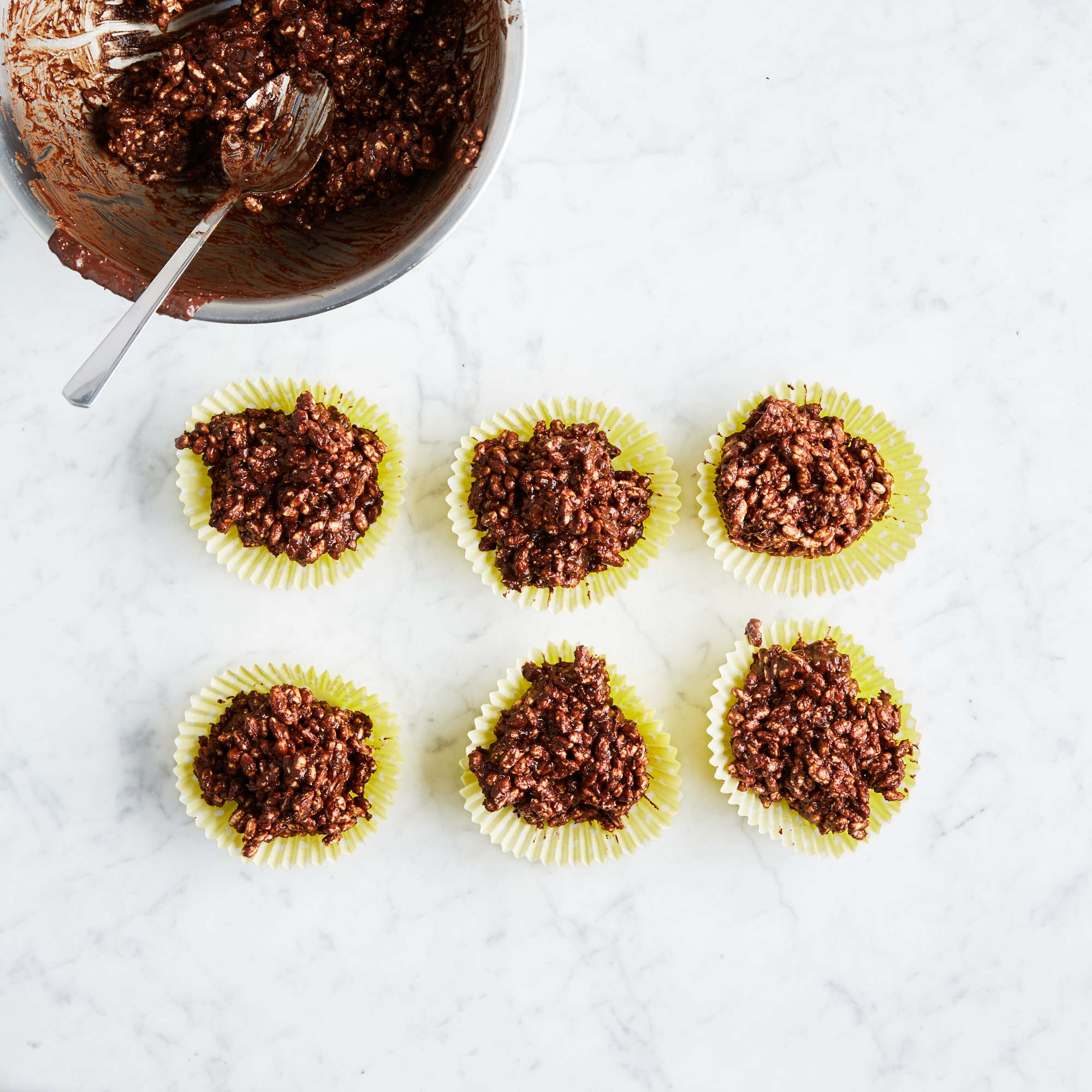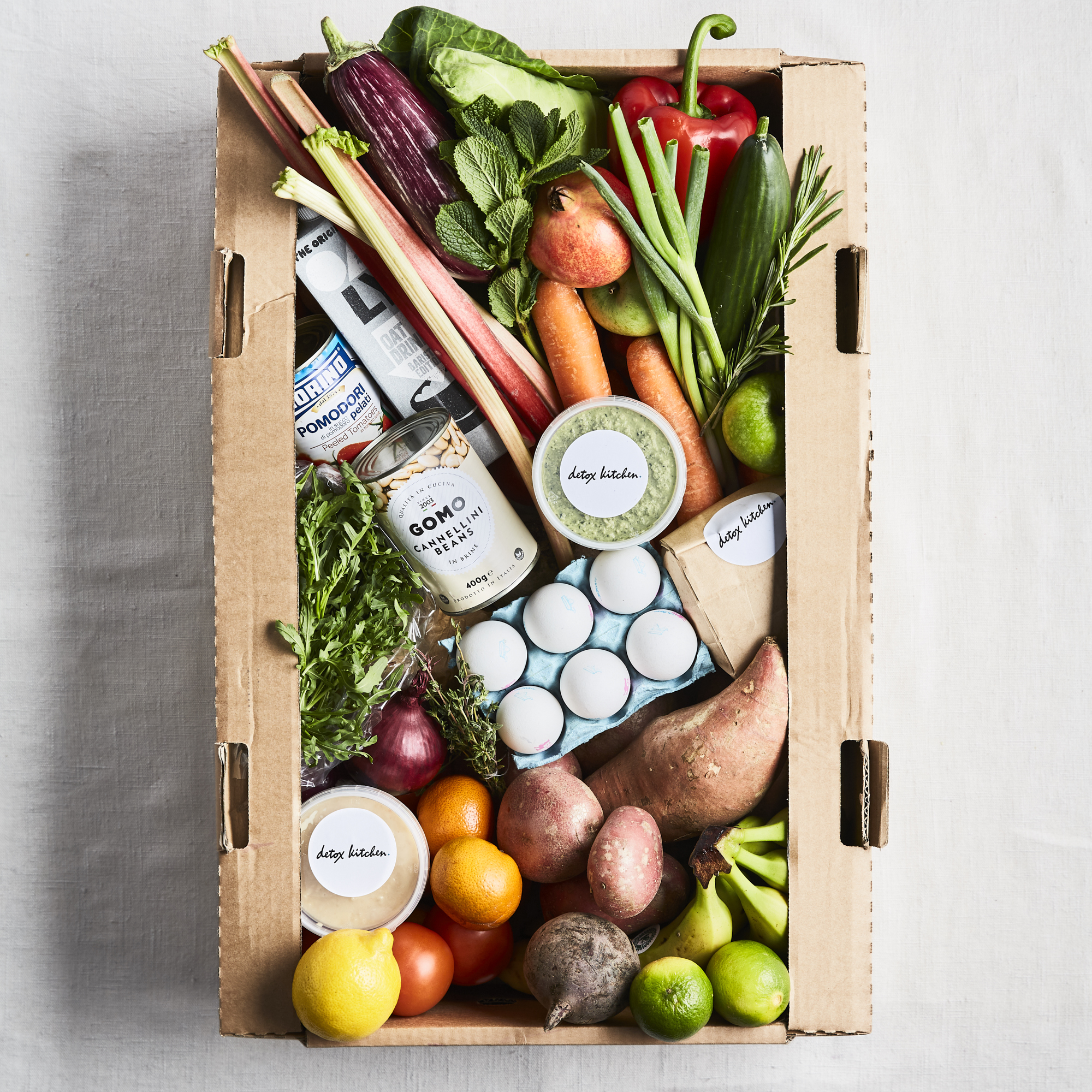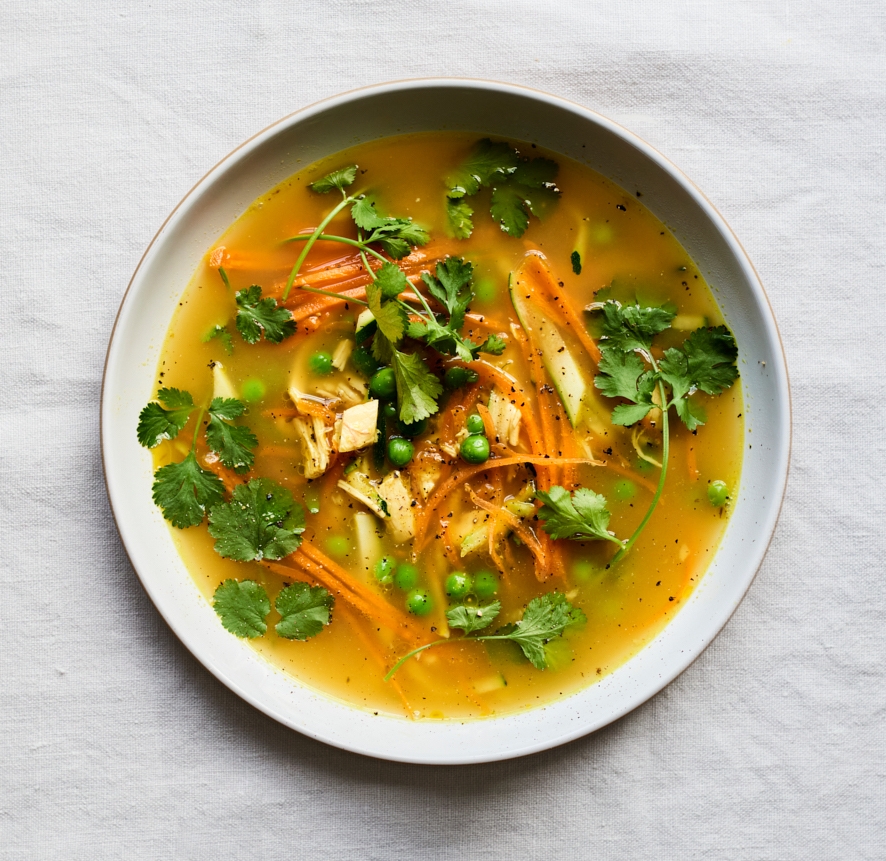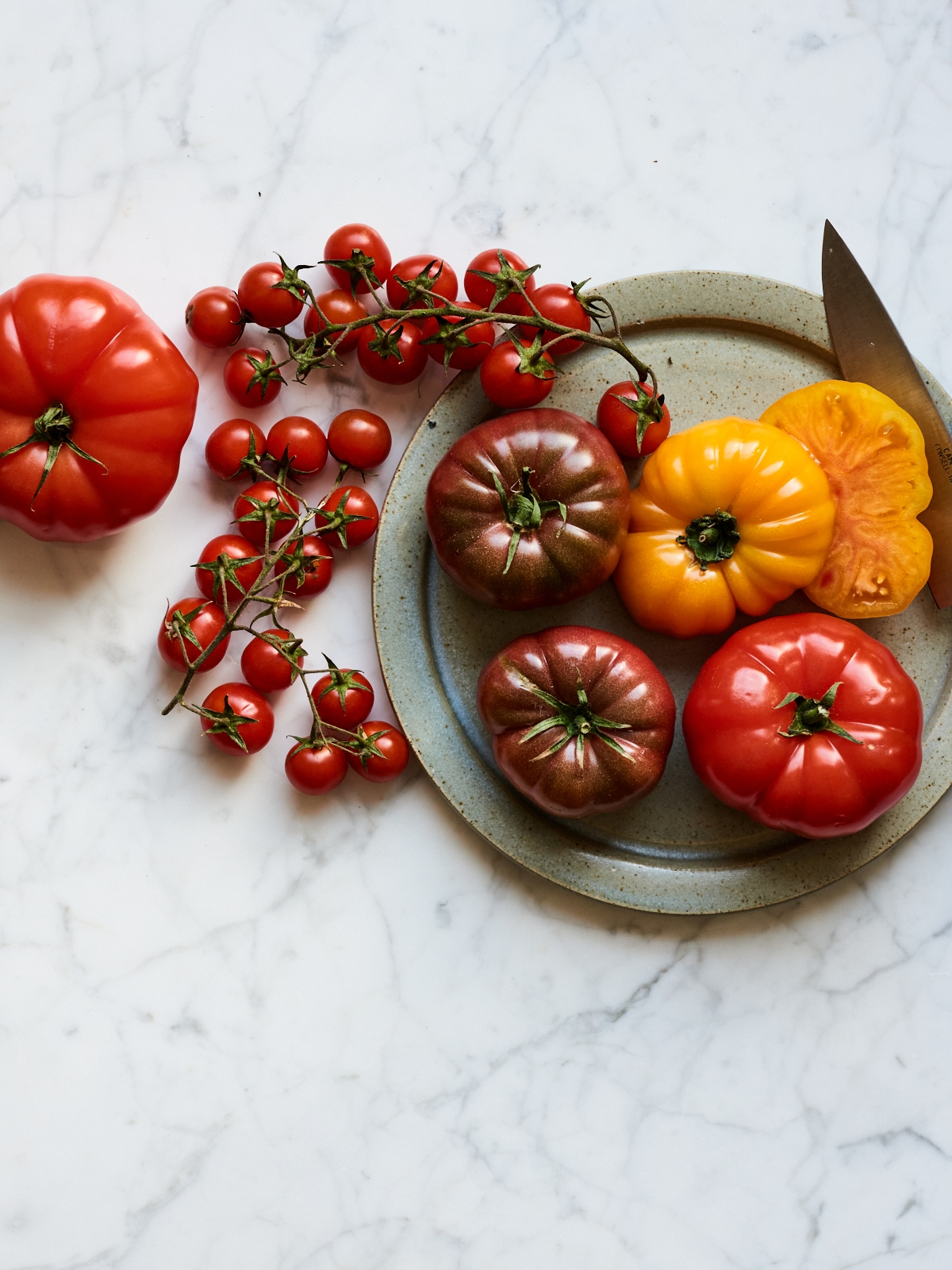03 Jun, 2020
In our Pantry
These are the staple ingredients we have in our pantry that make it easy to knock up fool-proof healthy dishes. There is no need to rely upon refined and processed ingredients when you have these seasonings, oils, grains, pulses and herbs at your fingertips.
FoodEquipment
Cooking with good-quality pots and pans makes a real difference to the way things turn out, so it's worth investing in a few key pieces.
Blender
Used mainly for making dressings or puddings. We recommend a Magimix, and if you can afford it, a large and small blender. We tend to use the large one for baking and the smaller for sauces, pesto’s and dressings.
Juicer
We recommend a Nutribullet, which is small and easy to use.
Julienne peeler
Great for creating vegetable spaghetti, especially with courgette.
Pestle and Mortar
The best way to break down herbs and spices. The heavier the better.
Oils
There are certain oils we use for certain cooking techniques. Generally this is dependent on flavour and smoking points. There are four oils that we always have on hand, extra virgin olive oil, extra virgin rapeseed oil, extra virgin coconut oil and cold-pressed nut oils. We only use extra virgin or cold-pressed oils because this method of pressing doesn’t use any chemicals or heating to extract the oil.
Extra virgin olive oil
We mainly use a good extra-virgin olive oil for every day cooking for sautéing and roasting. We prefer to use an olive oil that doesn’t have a strong flavour so that it doesn’t overpower a dish.
Extra virgin rapeseed oil
We use a good quality rapeseed oil for nearly all our salad dressings, as it is very low in saturated fat. It has a less intense flavour than olive oil, together with the deep yellow colouring and nutty flavours make it perfect for drizzling over salads and finishing dishes. It also has a high smoking point so can be used as an alternative to olive oil, but it is usually more expensive.
Extra virgin coconut oil
We tend to use coconut oil in Asian cooking or where the sweet coconut flavour will work well. One of the best things about coconut oil is that it has a high smoking point and so it is good for tempering spices. It features heavily in curries for this reason. It also works well in baking.
Cold-pressed ground nut oils
We tend not to cook with nut oils but rather use them in dressings to emphasise the nut flavour, for example if we are cooking with walnuts, we will use cold-pressed walnut oil in the dressing. Keep nut oils refrigerated, as they will keep for longer.
Herbs and spices

As soon as you conquer the art of using herbs and spices in cooking, you’ll be amazed how healthy cooking becomes so easy, quick and delicious. The best tip we can give you is to use your nose. If we are ever lacking inspiration we'll walk into our fridge, pick up the herb basket and have a good sniff, if herbs smell good together the likelihood is, they’ll taste good too. Coriander and mint are the best examples of this, give it a try!
When you are cooking spices, you will notice that the smell changes during the cooking process, usually when you are tempering them at the beginning. The smell should become more fragrant and less bitter, the change in smell is exactly replicated in the dish, from bitter to fragrant in just a few moments. Sometimes you will get it wrong, we still to this day will create a curry that tastes bitter because the spices weren’t cooked out, but it’s nothing a little lemon juice and coconut milk cant rectify, so don’t worry. The key with spices it to start off small and gradually add more as you get more confident with the cooking process.
Basil
When we think of basil we think of fresh Italian cooking and bright green leaves ripped over a cold gazpacho or blitzed in a vibrant pesto. Its intense aromatic flavour also goes perfectly with meat and fish.
Ginger
Pungent, sharp, slightly lemony and peppery, the ginger root is one of my most used ingredients. It adds a lovely freshness to any dish and always features in the base of curries or broths. Always go for a plump looking root, the wrinkly ones will be fibrous and dry. We rarely have time to peel ginger so in most dishes we just grate it with the skin on.
Garlic
One of the easiest ways to add flavour to a dish is to add some chopped garlic. We often use it raw in Asian inspired salads as it adds a fieriness. It appears in nearly all stews, giving the dishes a lovely mellow, sweet flavour. Add whole roasted it is a brilliant addition to soups or tomato sauce.
Fresh chives
This smallest, most vibrant of the onion family, we use chives in lots of salads to give them that sweet onion hit. They are also the perfect quick garnish, simply chop with scissors over any dish.
Cumin
The cumin seed is widely used in Indian, Mediterranean and Middle-Eastern food. It has a very strong smoky flavour and instantly adds a deep aroma to any dish. It can be overpowering so its best teamed with root vegetables, where the sweetness balances the flavor. Buy the seeds if you have a pestle and mortar, or the powder if you are short of time.
Coriander seeds
Often used in Indian cooking, the little seeds add a citrus flavour to a dish. However they need to be cooked carefully to get the full potential out of them, this is where your nose becomes very important, lightly dry fry them in a frying pan until a fragrant aroma is released, then take them off the heat and lightly crush them.
Fresh coriander
You either love it or hate it and we love it. So fresh and earthy are the flavours that it can transform dishes within seconds. We use the roots in the base of curries and stews as the flavour is more intense than the leaves and adds an earthy depth to the dish. As a garnish it can completely bring a dish to life with its citrus, peppery and slightly minty flavours.
Cinnamon
It’s amazing how a sprinkling of cinnamon can do wonders for a boring bowl of oats. It is the best spice for bringing out sweetness in a dish and adding an aromatic, warm flavour. Ground cinnamon is much stronger than using a cinnamon stick, so use with a delicate touch.
Mint
We mostly use spearmint in cooking as it is the most widely available. Always give it a good wash before you use it as it can often have bitter taste if you don’t. We always add a few leaves of mint to any pesto creating a lovely light freshness.
Rosemary
Good sturdy rosemary is the beginning of any roast dinner in our houses. Rosemary complements most root vegetables and gives any dish an intensely savoury edge.
Pulses and legumes

We would be lost without our pulses and legumes. They provide the basis of many of our vegetarian dishes, ensuring they are packed full of protein, fibres and complex carbohydrates. They also add a delicious texture to vegetarian dishes. Often people are afraid of cooking with dried beans, but fear not, simply soak them overnight and allow for a longer cooking time. And if you don’t have time for the soaking and cooking, buy a good quality organic tin.
Adzuki beans
This dark red bean is prized for its health benefits. Its sweet nutty flavour and firm texture make it great for soups and stews.
Beluga or puy lentils
We like to cook lentils al dente, especially when using them as the base of a salad. They hold their shape better than softer varieties such as red and yellow lentils. Their peppery, rich flavour make them a staple in our kitchens.
Black beans
Great for adding a statement black colour to any dish. We mainly use them in South American inspired dishes.
Butter beans
Butterbean mash is a favourite of ours, so quick and delicious. It also makes for a good potato mash alternative.
Cannellini beans
Great for absorbing flavours like the haricot bean. They are buttery, soft and plumb, making them perfect for salads or slow cooked stews and casseroles.
Chickpeas
Popular in Middle-Eastern, Indian and Mediterranean cooking, we use these in abundance. Used tinned for a quick hummus or soak overnight and cook them in casseroles for a crunchier texture. We also roast them for a crispy snack.
Haricot beans
This small white bean is similar to the cannellini bean. Slightly sweet and very creamy, we use it for our beans on toast recipe.
Kidney Beans
Shaped like a kidney with a thick skin and sweet taste, they are delicious in stews or pureed for a creamy side dish.
Mung beans
Earthy and nutty, this brilliant green bean is the star of the show in our mung bean curry.
Pinto beans
This speckled light brown, Mexican bean is great in stews and salads.
Red lentils
Used widely in Indian cooking, Red lentil Dal is one of our favourite dishes. Soft and earthy, they are so easy to cook.
Quinoa
One of our favourite grains, Quinoa deserves the title of ‘super grain’. Packed with protein and fibre with a delicious nutty flavour and crunchy texture, we use it in lots of salads. We also over cook it and add it to burgers or fishcakes as an alternative to potato.
Dairy alternatives
It is best to try and find calcium enriched plant-based milk to ensure you are still getting all the nutrients you would from the dairy version. These alternatives tend to be higher in protein and minerals and are actually very easy to make at home.
Rice milk
The sweetest of all the non-dairy milks, we like to have rice milk with muesli, granola and in smoothies.
Almond milk
We mainly use in in baking and smoothies.
Oat milk
We love Oatly. Oat milk is great for porridge or in hot drinks.
Coconut milk and yogurt
Containing good natural fats, we use coconut milk in curries and soups as well as in puddings.
Soya yogurt
We tend to use soya yogurt as an alternative, it is looser than normal yogurt and has a slightly bitter flavour but is delicious mixed with a little honey and fresh fruit.
Natural sweeteners
Fruit juice
We will often add the juice of an apple or pear to a breakfast or pudding for a natural sweet boost. Pureed and reduced apple or pear sauce is also a great alternative to eggs in pancakes, cakes or muffins.
Honey, clear or raw
If you can get fresh honey straight from the producer, do it. The taste will be sublime compared to that of the shop-bought stuff. Good quality honey is rich in antioxidants, minerals and vitamins so it’s the perfect substitute for cane sugar.
Vanilla pod
One of our all time favourite pudding ingredients, so rich in flavour it adds a fragrant, sweet note that cant be matched by any other ingredients. We always buy pods, although it is more expensive, one pod can go a long way. We use the vanilla beans and then place the pod in brown rice or flour to infuse the flavour.
Raw cacao powder
The raw form of chocolate, its rich and intense in flavour matched with a natural sweetener, it makes for the perfect healthy chocolate fix.

Flour
There are so many great gluten and wheat-free flour options our there which is great news for us healthy bakers. In most supermarkets you can get a flour that will simply be labeled ‘gluten and wheat free flour’ this tends to made up from a variety of rice and buckwheat. There will be a much wider variety in health food stores.
Almond flour
Simply finely ground almonds, perfect for pastry bases, giving it a lovely nutty flavour.
Buckwheat flour
We tend to mix this with equal quantities or rice flour and use this in pancakes, scones and cakes or as a binder for fishcakes and burgers. It is very versatile and acts similarly to a normal plain flour.
Arrowroot
This is a starch obtained from a plant. It acts as a binder when gluten isn’t present. We will often add arrowroot to baking if we know that the ingredients will need help binding.
Baking powder and bicarbonate of soda
Gluten-free baking powder and bicarbonate of soda is available in most supermarkets and reacts in the same way to the glutinous versions.
Salt and pepper
Salt
We only use Malden salt in cooking because of its light and clean flavour with the soft flaky texture. If you can't find Malden, look for a natural salt that hasn’t been chemically cleaned.
Pepper
We always freshly grind a good black peppercorn using a pestle and mortar. A good cracked black pepper should always be on hand.
Tamari
Wheat and gluten-free soy sauce, it is perfect for adding saltiness to Asian dishes.
Now you've got your pantry stocked, you'll need the fresh fruit and veg to go with it! Browse our brilliant Veg Boxes here.




